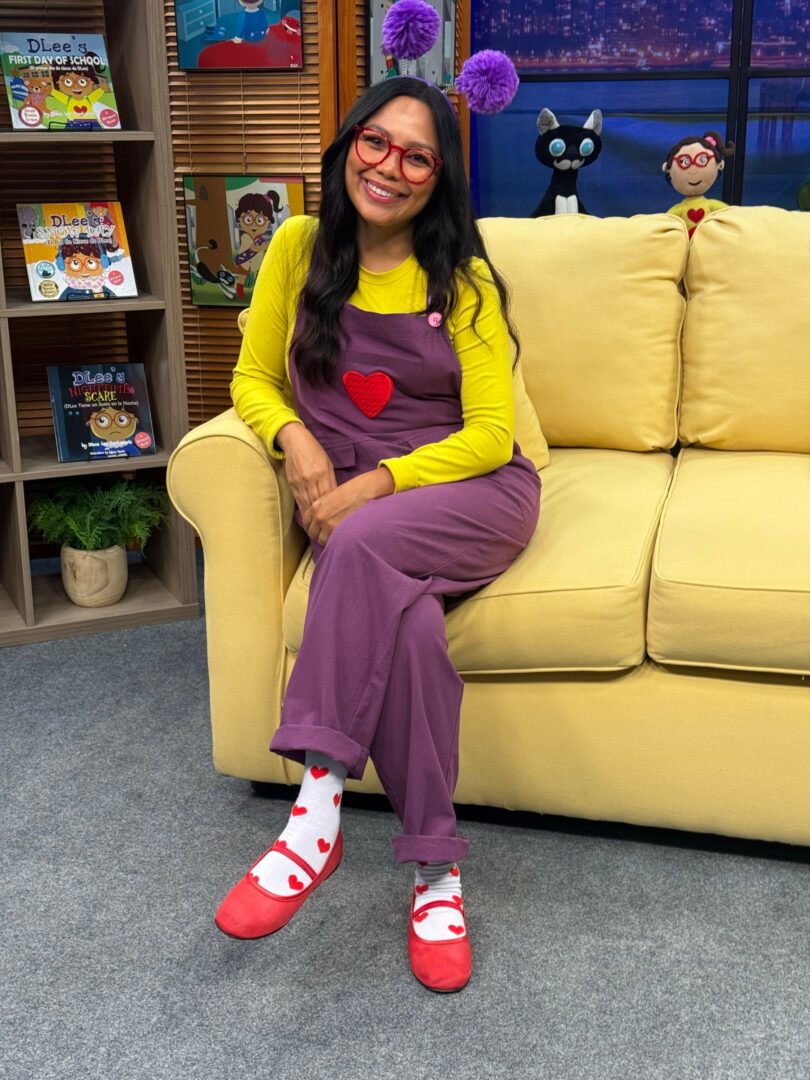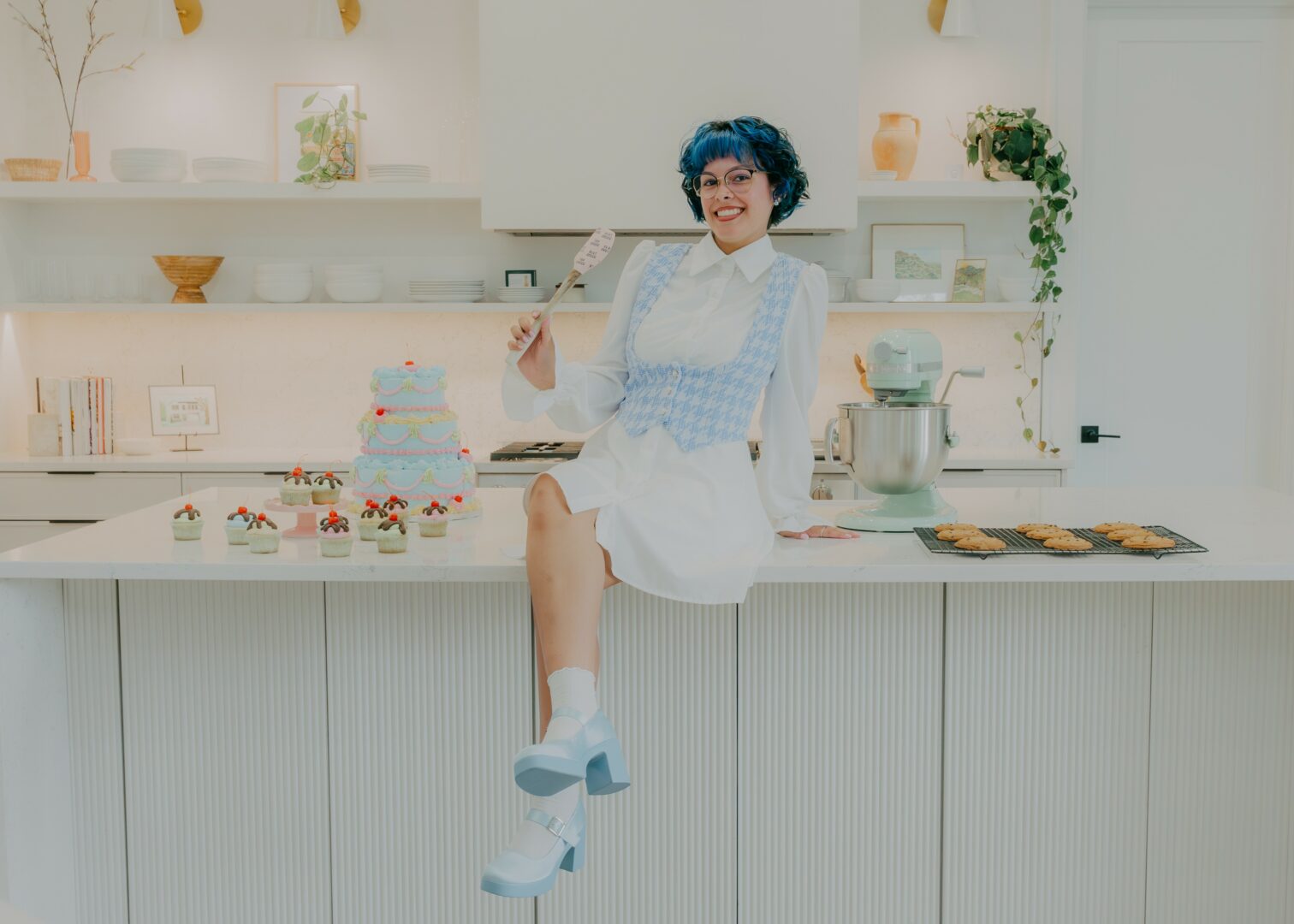We’re excited to introduce you to the always interesting and insightful Angelina Tran. We hope you’ll enjoy our conversation with Angelina below.
Angelina, we’re so excited for our community to get to know you and learn from your journey and the wisdom you’ve acquired over time. Let’s kick things off with a discussion on self-confidence and self-esteem. How did you develop yours?
In the design field, it can be difficult to build confidence in your own work when you’re constantly surrounded by others who have more experience or more impressive portfolios. It’s easy to get caught up in their accomplishments and lose sight of your own progress. When I first started designing, I wasn’t satisfied with my work. It felt cheap or poorly executed. Naturally, as a beginner, I wasn’t producing great work, but I couldn’t see it that way. Instead, I saw myself as a terrible designer and questioned why I was even pursuing something I wasn’t “good enough” at. Over time, my work began to improve. Gradually, I started feeling proud of my designs and began entering them in art shows and contests, hoping to get noticed. But even as I started to appreciate my own work, I couldn’t help but notice how talented everyone else around me was. This led to insecurity, as I constantly compared myself to others and doubted my own achievements. It was hard being in the mindset that ‘you are not good enough’ and that everyone else will always be better.
It wasn’t until I took on my most challenging project that my mindset started to shift. Immersed in the workload and focused on perfecting every detail, I became less concerned with how I measured up to others and more invested in pushing my own creative boundaries. When I finally completed the project, I was amazed by what I had accomplished. It was only then that I realized the extent of my abilities. For the first time, I felt truly confident in my work, not because I was comparing myself to others, but because I had seen what I was capable of on my own.

Let’s take a small detour – maybe you can share a bit about yourself before we dive back into some of the other questions we had for you?
Hello, my name is Angelina Tran and currently based in Michigan. Since I was young, I have always been creative, but never artistically gifted. I knew that I was capable of design work because of my creative mind. I focused my education towards visual designs. This led me to graphic and product designs. I hope to use my problem-solving and user focused skills with my visual design skills to create more design solutions in the future. I am currently using these skills in my personal projects and freelance projects. I am always looking for more opportunities to develop my skills, and new connections as well.

Looking back, what do you think were the three qualities, skills, or areas of knowledge that were most impactful in your journey? What advice do you have for folks who are early in their journey in terms of how they can best develop or improve on these?
Everyone brings their own unique qualities and skill sets to their field, and for designers, certain fundamental principles are essential to creating effective and visually appealing work. In my experience, understanding typography, layout, and color theory are some of the most critical skills a designer can master. Typography is particularly important, as most design work involves text in some form. A good designer knows that typography is more than just choosing a typeface—it’s about ensuring that the type complements the message, enhances readability, and creates the right tone. This ties directly into the importance of layout design. Effective layouts guide the viewer’s eye and present information in a clear, organized way. To truly master typography, you must also grasp layout principles to position text and other elements harmoniously, ensuring that the design is clean, balanced, and functional.
Layout skills go beyond working with text. Knowing how to arrange images, graphics, and other design elements is crucial for creating cohesive and engaging compositions. A well-structured layout allows the design to communicate its message effectively without overwhelming or confusing the audience.
Another essential aspect of design is color theory. Choosing the right color palette can make or break a design. A successful designer understands how to match colors that not only look good together but also support the purpose of the design. Poor color choices—whether too many dark or too many light shades—can cause elements to blend together or clash, undermining the overall effectiveness of the design. A well-balanced color palette enhances visual hierarchy, evokes the right emotions, and reinforces the design’s intent.
Ultimately, mastering these core skills—typography, layout, and color theory—provides a solid foundation for any designer. These elements work in harmony to create designs that are not only visually appealing but also functional and effective in communicating the intended message. As a designer, honing these skills allows you to elevate your work and create designs that resonate with your audience.

What was the most impactful thing your parents did for you?
As much as I hate to admit it, my mom has played a significant role in shaping my career path. Being Asian-American, it’s often hard to escape the stereotypes society has assigned to us. We’re frequently seen as the “smart ones,” expected to become doctors, dentists, or professionals in other high-status fields, particularly within medicine. While this stereotype isn’t entirely unfounded, my parents, like many others, did have similar expectations for me. They immigrated to America to give me and my siblings opportunities for a better life than what they had in Vietnam. Their dream was for us to achieve financial stability and avoid the hardships they endured, and naturally, they believed a career in medicine was the surest way to secure that future. I initially followed the path they wanted for me, enrolling in a pre-med program with the hope of fulfilling their wishes. However, it didn’t take long for me to realize that it wasn’t the right fit. I couldn’t see myself happy in that career long-term. It was my mom who surprisingly gave me the permission I didn’t know I needed. She told me it was okay to pursue something that brought me joy, even if it wasn’t the traditional path they had envisioned.
That’s when I discovered graphic design. My mom, despite the cultural pressures and expectations, supported my decision wholeheartedly. She pushed me to follow my passion, telling me to keep going, even when I faced setbacks or doubted my abilities. When I created designs that didn’t turn out well, she still encouraged me, reminding me that growth comes from those moments of struggle. Her unwavering belief in me has been a constant source of motivation, and it’s because of her support that I’ve been able to pursue a career that truly makes me happy.
Her influence goes far beyond career choice—she’s taught me that success isn’t just about financial security or societal approval, but about finding fulfillment in what you do.
Contact Info:
- Instagram: https://www.instagram.com/byangelinatran/?hl=en
- Linkedin: https://www.linkedin.com/in/angelina-tran-3626012a0/







